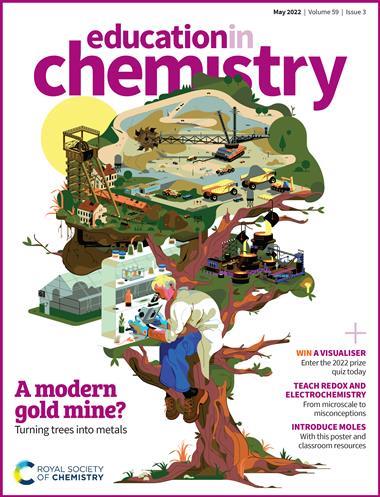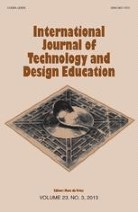Highlights of Publishing Educational Research
by Associate Provost Pamela Brown
1. Components of an Educational Research Paper (1)
Ideally, planning for publication starts before the research projects begins, in order to avoid common pitfalls. The literature survey before the start of a project should suggest possible journals for publication. Study the format of likely journals and keep it in mind for your future publication. A paper should be limited to one significant finding or closely related findings. Typically sections include:
2. Developing Research Questions (2)
Good research questions typically build on current theories. They meet the following criteria:
3. Developing Methodologies (2)
Instruments can be qualitative or quantitative, depending on the research questions. Mixed methods use both to balance the inherent weaknesses of each. All research involving human subjects needs IRB approval or exemptions. Qualitative methods include interviews, observations, case studies and document analysis. Quantitative methods use inferential statistics to reject the null hypothesis – the opposite hypothesis is incorrect. It is not possible to prove that the research hypothesis is correct. Instruments should be valid (accurate) and reliable (reproducible). Identify potential limitations and try to modify the methods to eliminate or minimize. Use of multiple methods can improve the experimental design.
4.Surveys and Tests (2)
Many instruments are already available such as the SALG (Student assessment of learning goals), and the Motivated Strategies for Learning Questionnaire (MSLQ), to measure changes in metacognitive skills and attitudes.
To test student learning, design questions with a range of difficulty. A plot of percentage correct as a function of increasing difficulty helps to identify questions that might need to be reviewed and revised. Be consistent in style and word choices (use the word “learn” three times, instead of “learn, comprehend, understand”, in three questions comparing student assessment of their experience in lab, lecture and group work). Avoid using “and” and “or” in questions. Instead ask two separate questions. Avoid vocabulary that may be unfamiliar and skew results. Keep items brief. When designing multiple choice questions select “distractors” that are plausible incorrect answers. Select rating scale choices that are clear (strongly disagree instead of very unimportant). Pilot instruments to catch potential problems.
Common Pitfalls in Methodologies (2)
When developing methodologies avoiding common pitfalls will increase your chances of publishing your work. Pitfalls include:
5. Sample Journals for Publishing Educational Research (3)
General Educational Journals
Journal of College Student Development
Journal of College Student Retention
International Journal for the Scholarship of Teaching and Learning
American Educational Research Journal
Journal of the Learning Sciences
Learning and Instruction
Cognition and Instruction
Review of Educational Research
General STEM
Science Education
Journal of Research in Science Technology
Journal of College Science Teaching
Journal of STEM Education
Physics
American Journal of Physics
The Physics Teacher
Physical Review Special Topics – Physics Education Research
Chemistry
Journal of Chemical Education
Chemical Education Research and Practice
Biology
American Biology Teacher
BioScience
Advances in Physiology Education
CBE-Life Sciences Education
Engineering/Technology
Journal of Engineering Education
Engineering Studies
European Journal of Engineering Education
Engineering Education
Chemical Engineering Education
Journal of Technology Education
6. Sample Educational Publications by City Tech Faculty (2011)
References
Methodologies for Discussion
Are these methodologies well designed? If not, what is (are) the common error(s)? How could the method be improved?
Methodology: A four week summer bridge course providing college preparation and career advisement was taken by 40 pre-freshmen majoring in biology. All biology students registering for the fall semester were offered the opportunity to take the course. The GPA and one year retention of the summer bridge cohort were compared to all biology freshmen to determine if the course improved GPA and retention.
Discussion: The increased GPA and retention of the summer bridge cohort indicates that the course improved student success
Methodology: An instructor offered two sections of ECON 101 in the fall of 2010 – one with 25 students the other with 50 students. The SALG was used to survey student assessment of their learning in both sections
Discussion: Higher reported learning in the section with 25 students indicates that students learn more as class size decreases.
Methodology: An instructor offered sections of ~500 students each in General Chemistry in both spring 2011 and spring 2012. In spring 2012 clickers were used, but in 2011 they were not.
In both years the Chemical Attitudes and Experiences Questionaire (CAEQ), a commercially available reliable and valid survey instrument, was administered the first day and last day of class to measure changes in student attitudes.
Discussion: Greater improvements in students attitudes in the “clicker” section demonstrate that “clickers” positively impact student attitudes toward chemistry.
this content originally from Queensland University of Technology and is licensed CC-BY-NC-SA 
Unless the title is Open Access, please access full text, if available, via the NYCCT Library ejournal portal. Links below go to the general journal homepage.
 Chemistry Education: Research and Practice - Royal Society of Chemistry
Chemistry Education: Research and Practice - Royal Society of Chemistry
 try (eic) e-magazine - Royal Society of Chemistry
try (eic) e-magazine - Royal Society of Chemistry
 Journal of Research in Science Teaching (JRST) - National Association for Research in Science Teaching
Journal of Research in Science Teaching (JRST) - National Association for Research in Science Teaching
 Journal of STEM Education: Innovations and Research
Journal of STEM Education: Innovations and Research

Unless the title is Open Access, please access full text, if available, via the NYCCT Library ejournal portal. Links below go to the general journal homepage.
 Australasian Journal of Educational Technology - Australasian Society for Computers in Learning in Tertiary Education (ASCILITE)
Australasian Journal of Educational Technology - Australasian Society for Computers in Learning in Tertiary Education (ASCILITE)
Publication Date: 1985 -
ISSN 1449-5554 (6 issues p.a.) PEER REVIEWED & OPEN ACCESS
Publishing research and review articles in educational technology, information and communications technologies for education, online and e-learning, educational design, multimedia, computer assisted learning, and related areas.
this content originally from Queensland University of Technology and is licensed CC-BY-NC-SA 
Unless the title is Open Access, please access full text, if available, via the NYCCT Library ejournal portal. Links below go to the general journal homepage.
 Advances in engineering education : a journal of engineering education - American Society for Engineering Education
Advances in engineering education : a journal of engineering education - American Society for Engineering Education
Australasian journal of engineering education - Australasian Association for Engineering Education
Publication Date: 1999 -
ISSN 1325-4340 (2 issues p.a.) PEER REVIEWED
Presents work at the forefront of engineering education internationally. Each issue is focussed on a specific theme, including an overview paper introducing the theme, and invited and submitted papers from Australasian and international authors at the frontier of that particular theme.
 Journal of civil engineering education - American Society of Civil Engineers
Journal of civil engineering education - American Society of Civil Engineers
Publication Date: 1983 -
eISSN: 1943-5541 (4 issues p.a.) PEER REVIEWED
This content originally from Queensland University of Technology and is licensed CC-BY-NC-SA 
Unless the title is Open Access, please access full text, if available, via the NYCCT Library ejournal portal. Links below go to the general journal homepage.

 earning and instruction - European Association for Research on Learning and Instruction (EARLI)
earning and instruction - European Association for Research on Learning and Instruction (EARLI)
this content originally from Queensland University of Technology and is licensed CC-BY-NC-SA 
Unless the title is Open Access, please access full text, if available, via the NYCCT Library ejournal portal. Links below go to the general journal homepage.

 Journal of STEM education: Innovations and research
Journal of STEM education: Innovations and research
this content originally from Queensland University of Technology and is licensed CC-BY-NC-SA 
Unless the title is Open Access, please access the full text, if available, via the NYCCT Library ejournal portal. The links below go to the general journal homepage.
 American Biology Teacher - National Association of Biology Teachers & University of California Press
American Biology Teacher - National Association of Biology Teachers & University of California Press
 Journal of Research in Science Teaching (JRST) - National Association for Research in Science Teaching
Journal of Research in Science Teaching (JRST) - National Association for Research in Science Teaching
this content originally from Queensland University of Technology and is licensed CC-BY-NC-SA 
Unless the title is Open Access, please access full text, if available, via the NYCCT Library ejournal portal. Links below go to the general journal homepage.
this content originally from Queensland University of Technology and is licensed CC-BY-NC-SA 
Unless the title is Open Access, please access full text, if available, via the NYCCT Library ejournal portal. Links below go to the general journal homepage.
 Journal of Research in Science Teaching (JRST) - National Association for Research in Science Teaching
Journal of Research in Science Teaching (JRST) - National Association for Research in Science Teaching
 Physical Review Special Topics: Physics Education Research - American Association of Physics Teachers
Physical Review Special Topics: Physics Education Research - American Association of Physics Teachers